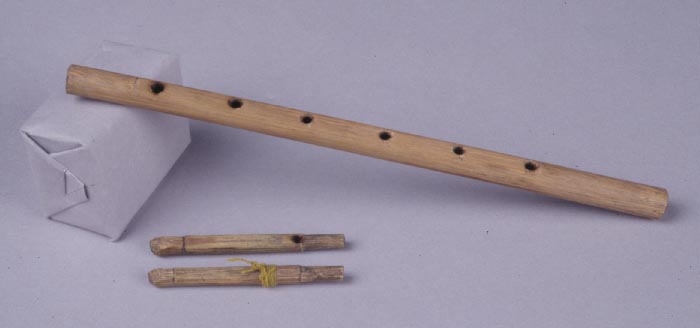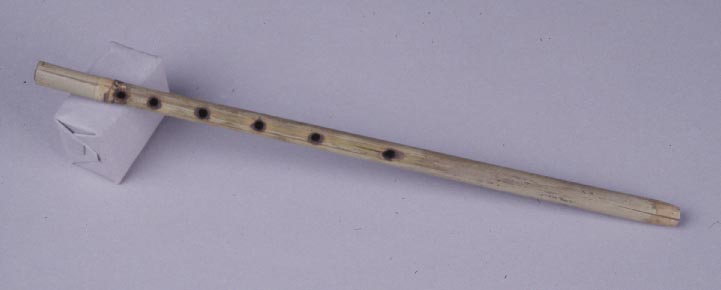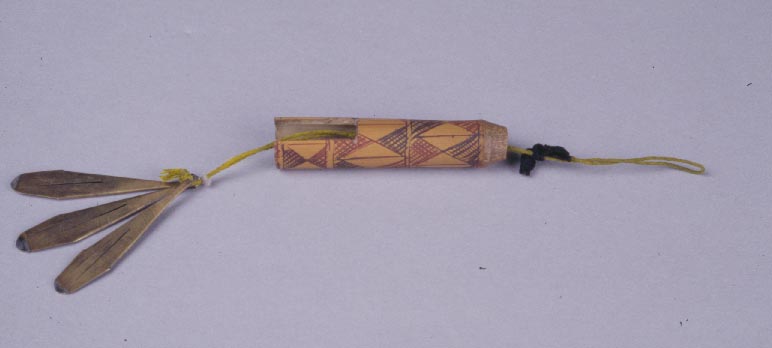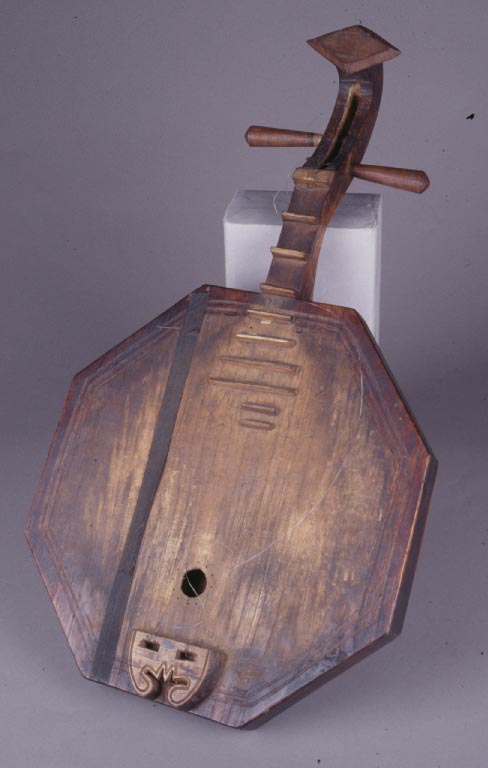Clarinet
Description:
This bamboo tube with six holes set into flattened surface is technically a clarinet, because it has a single reed. The reed is an extra piece, 6 cm. long with one hole and flattened surface on that side, that fits into the mouth opening.
How Constructed:
Made from single bamboo tube; reeds made from bamboo strips.
Use:
Blown at the reed end and fingered in the finger holes, the mabur produces a unique sound. An accomplished player uses circular breathing to produce long notes and continuous series of rapid, fluid melodies.
Listen:
Listen to accomplished clarinetist Ajy Daha of Meigu county demonstrate his virtuosity.
Back to Top
This bamboo tube with six holes set into flattened surface is technically a clarinet, because it has a single reed. The reed is an extra piece, 6 cm. long with one hole and flattened surface on that side, that fits into the mouth opening.
How Constructed:
Made from single bamboo tube; reeds made from bamboo strips.
Use:
Blown at the reed end and fingered in the finger holes, the mabur produces a unique sound. An accomplished player uses circular breathing to produce long notes and continuous series of rapid, fluid melodies.
Listen:
Listen to accomplished clarinetist Ajy Daha of Meigu county demonstrate his virtuosity.
Back to Top





